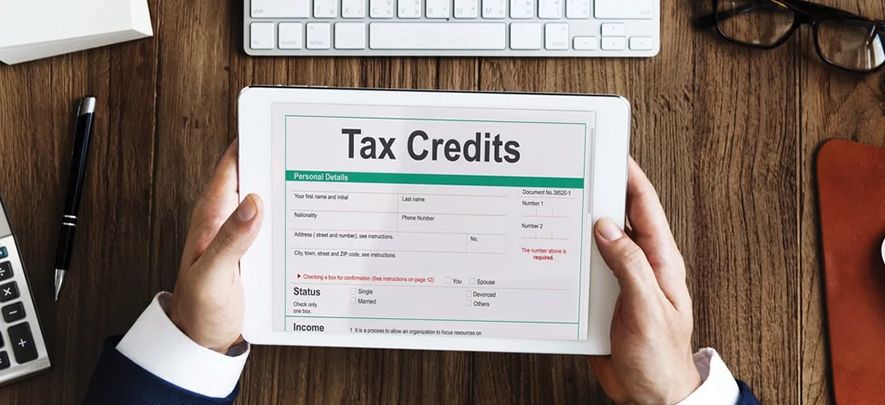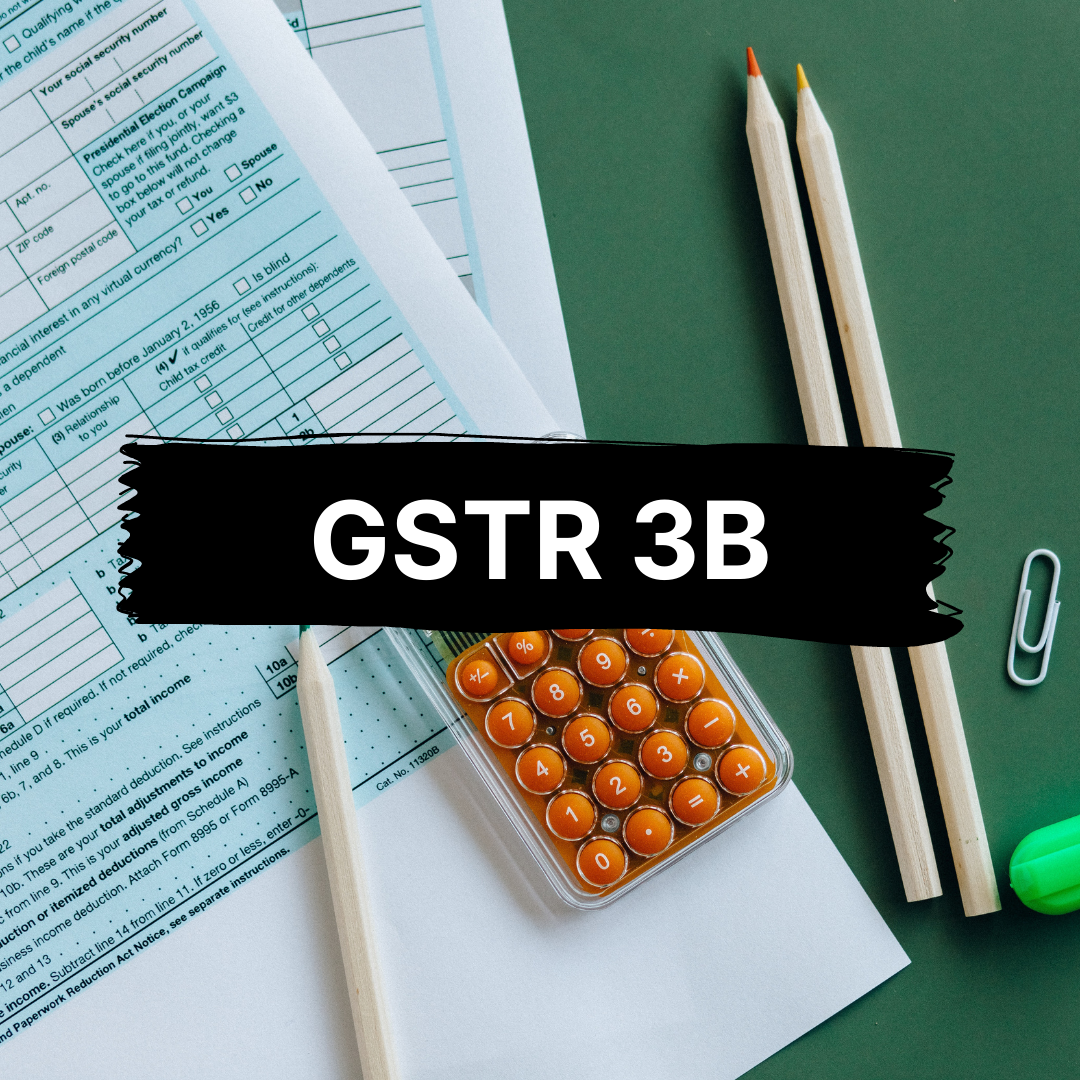Every business transaction is supported through invoices to carry out activities. Under GST, the GST invoice is a bill that a seller or a service provider offers to a customer that acts as proof of the purchase or avail of the service respectively. In a general meeting by the GST department, they introduced invoicing to authenticate the transactions and enable their further use.

In this article, we will be covering certain aspects related to invoicing under GST and taking up full coverage of the following:
- What is a GST invoice?
- What is invoicing under GST?
- Who should comply with the invoicing process?
- Prescribed format of GST Invoice
- What are the types of invoices and bills issued in the invoicing process?
- What is the process of issuing invoices?
- What are the prescribed rules for the invoicing process?
- The procedure of Invoicing Process
- FAQs related to Invoicing Process
- How can Deskera help Businesses?
What is a GST invoice?
A GST invoice is a receipt or bill created by the seller of goods or services to the customer. It lists out the services availed and products purchased along with the total amount due to the customer.
The GST invoice includes Central Goods & Services Tax (CGST) and State Goods & Services Tax (SGST) and displays the total after-tax charged on each product or service.
For example, if you go out for dining and the bill amount before tax is 1500, then after leaving the charge of CGST & SGST at the rate of 8%, the total bill amount will come up to Rs. 1740 that is to be paid by the customer:
i.e
The same notion applies to all products and services.
What is invoicing under GST?
Invoicing is a system in which B2B invoices are processed and authenticated via electronic means. In simple words, it is the submission of business transaction invoices by the authenticated users that apply for the invoicing process. The person will be issued an identification number for every invoice by the Invoice Registration Portal.
All the information related to invoices will be transferred to the portal, further minimizing manual data entry while filing the GSTR-1 returns by the businesses.
Who should comply with the invoicing process?
As per the notification led by CBIC under the notification 5/2021, the invoicing process is applicable only for businesses with more than 50 crores turnover.
The taxpayers coming under this category must comply with the invoicing process and complete the process on time.
However, there are some exceptions to the categories where the invoicing process is not applicable. All of them are registered persons under the law but are exempted from the invoicing process.
The list of these persons are as follows:
- A Special Economic Zone (SEZ) unit
- A registered person supplying passenger transportation services
- An issuer, banking company, or financial institution
- Government department and local authorities
- A Goods Transport Agency (GTA)
- A registered person supplying services for the admission to the exhibition of cinematographic films under multiplex services
Prescribed format of GST Invoice
The prescribed format of the GST tax invoice includes every detail as mentioned in the picture!
This is how a GST invoice looks like covering the following:
- Name, address, and GSTIN of the supplier
- A consecutive serial number not exceeding 16 characters
- Date of the issue
- Name, address & GSTIN of the recipient, if registered
- Name and address of the recipient and their address of delivery
- HSN code of goods or Accounting Code of services
- A detailed description of goods and services
- Price of the good or the services
- Quantity in case of goods and unit in case of services
- The total value of goods or supply of services
- The taxable value of supply of goods and services
- GST tax rate applicable
- Amount of tax charged in case of goods and services
- Total invoice value
- Digital Signature or signature of the supplier or the authorized representative
What are the types of invoices and bills issued in the invoicing process?
Apart from the issue of tax invoices, there is a list of 7 different types of invoices and bills used in the invoicing process of GST.
These are as follows:
- Bill of Supply
- Receipt voucher
- Refund voucher
- Payment Voucher
- Debit and Credit Notes
- ISD invoice
- Delivery Challan
1. Bill of Supply
A bill of supply is a document required to be issued when making the supplies of goods and services. These are the services and goods that are exempted from tax or by the composition dealer.
Following is the specimen of the bill of supply:
2. Receipt voucher
A receipt voucher is a document required to be issued on receiving any advance payment concerning the supply of goods or services or both.
Following is the specimen of receipt voucher:
3. Refund voucher
A refund voucher is issued when there is no supply made against the advance payment made by the customer.
Following is the specimen of the Refund Voucher:
4. Payment Voucher
A payment voucher is a document wherein the recipient is liable to pay under the reverse charge required when making the payment to the supplier.
5. Debit and Credit Notes
A debit note is issued when the issued tax invoice for the goods or services is less than the taxable value.
A credit note is issued when the issue tax invoice for the goods and services exceeds the taxable value.
The credit note is also issued when the supply of goods or services is deficient and the respective goods and services are returned to the supplier.
6. ISD invoice
The ISD invoices ARE issued to distribute the income tax credit among the branches form under the same PAN number.
7. Delivery Challan
The delivery challan is issued in the case of transportation of goods before preparing the tax invoice.
It is also issued for the stock transfer within the state.
What is the process of issuing invoices?
The process for issuing invoices is categorized under both Goods and Services. To ease out the process of issuing invoices, the Indian government has outlined and prescribed a general time for invoices by the suppliers.
- In the case of goods
The suppliers of goods need to draw the invoice on or before the date of supply of goods.
It includes:
- Goods dispatched for delivery to the recipient
- Goods collected from the supplier by the recipient
If, in case, the supplier has a constant order from the recipient, then the supplier of goods can issue the invoice under GST on or before the final payment.
- In case of services
In services, the GST bill is issued on the same day or within 30 days of providing the services.
If there is a case of financial services provided by banks or financial institutions, then the deadline to issue the GST bill increases to 45 days from the date of service supply.
What are the prescribed rules for the invoicing process?
Following are the list of rules involved in the invoicing process:
- The GST taxpayer should comply with the rule of issue of invoices for every financial year.
- A GST taxpayer is required to issue a tax invoice containing all the details and particulars of the invoice.
- If there is a case of an electronic invoice, then the digital signature of the supplier will be required.
- The time limit for issuing invoices is within 30 days for services and 45 days in case of services by a banking company or financial institution.
- The manner of issuing invoices is different for both goods and services.
For goods
In the case of a supply of goods, the invoice is prepared in a triplicate manner as described below:
- The original copy is marked as "Original for Recipient."
- The Duplicate copy being marked as "Duplicate for Transporter" and
- The triplicate copy being marked as
"Triplicate for Supplier"
For Services
In the case of a supply of services, the invoice is prepared in a duplicate manner as described below:
- The original copy of being marked as "Original for Recipient" and
- The duplicate copy is marked as "Duplicate for Supplier."
Also, the serial number of invoices issued during the tax period should be furnished electronically to a common portal as mentioned in the form GSTR-1.
6. If there is a case of export of goods or services, then the invoice should carry an endorsement stating
" Supply meant for export on payment of integrated tax or supply meant for export under bond or letter of undertaking without payment on integrated tax."
7. If there is an issue of the wrong invoice, or without actual supply of goods or services, or adequate documentation, the taxpayer will be liable to pay the penalty of rupees 25000 coming under the offenses of GST Act.
The procedure of Invoicing Process
The procedure of invoicing has been turned online, making every taxpayer feasible and comfortable with the process.
There is a series of step-by-step invoicing processes for GST. Let's take a look at the significant six steps:
Step 1: Create the invoice with the help of accounting or billing software prescribed under the invoice format.
Step 2: After that, head over to the Invoice Registration Portal to authenticate the IRN linked with the supplier of goods or services.
Step 3: After the first two formalities, the taxpayer needs to raise an invoice. It should include all the necessary details like billing name and address, GSTN of the supplier, transaction value, item rate, GST rate, Tax amount.
Step 4: The next step is to upload the invoice along with the Invoice Reference Number (URN) by logging into the Invoice Registration Portal
Step 5: After the verification, the portal will update the invoice with the IRP's digital signature
Step 6: At the final step, the IRP will send the authenticated payload to the GST portal for filing GST returns. The GSTR-1 of the seller will get auto-filled in the relevant tax period.
And this is how the procedure of invoicing is carried out in GST.
FAQs related to Invoicing Process
Following are the frequently asked questions (FAQs) related to the invoicing process:
Q1. Is there any provision to cancel invoices?
Answer: Yes, there is a provision to cancel the invoices as a whole but not on a partial basis.
Q2. Is bulk loading of invoices for the generation of iron possible?
Answer: No, there is no provision for bulk loading of the invoices. You need a separate ERP for separate invoices.
Q3. Can we personalize GST invoices?
Answer: Yes, GST invoices can be personalized by using the company's logo.
Q4. Is there any provision to revise invoices issued before GST?
Answer: Yes, you have the provision to revise invoices issued before GST. The taxpayers can issue a revised invoice within one month from the date of registration.
Q5. Is there any difference in the formatting of GST invoices?
Answer: Yes, the government has provided relaxation on the supplier's invoice format, particularly in banking and passenger transport.
How can Deskera help Businesses?
Deskera Books is a time-saving strategy for managing your work contacts, invoicing, bills and expenses. You can also import opening balances and set up chart accounts through it.
Deskera Books is software that enables you to generate e-Invoices for Compliance with the Indian jurisdiction. It lets you easily create e-invoices by clicking on the Generate e-Invoice button.
A quick video tour will help you get a better understanding of the entire process in a few minutes.
Now that you have Deskera, you can easily manage your journals. A single interface gives you access to all remarkable features, including the ability to add products, services, and inventory.
You can automatically generate and send invoices using this accounting software. Further, creating financial statements has become considerably easier thanks to the software, which lets you draft balance sheets, income statements, profit and loss statements, and cash flow statements.
From setting up your organization to inviting your colleagues and accountant, you can achieve all this with Deskera Books.
You can witness the easy implementation of the tool and try it out to get a renewed experience while handling your accounting system.
Acquaint yourself with a new-age system that takes care of Accounting, finance, inventory, and much more, all under one single roof.
Key Takeaways
The article covers everything about the invoicing process under GST.
Let's take a look at the key takeaways of the article:
- A GST invoice is a receipt or a bill created by the seller of goods or services.
- Invoicing process under GST system in which B2B invoices are processed and authenticated via electronic means.
- There is a prescribed format of GST invoices accepted for the procedure.
- Other than tax invoices, there are seven different types of invoices and bills issued under-invoicing process.
- The method of issuing invoices is categorized under both goods and services.
- There are rules involved in the invoicing process and should be complied with by each GST taxpayer.
- The invoicing process has been turned online and includes six steps involved in the invoicing process for GST.
Related Articles











